Madrid the Memorable


Capitals are meant to be showrooms of their respective countries — rich conglomerations of everything that is beautiful, enduring and affirming. No doubt that Madrid shows off Spain in a good light, but it is a kind of glow tinted with sepia. For the city keeps its old bones well. The skyscrapers and other modern buildings are no match for the grand but quiet statements of the past: neoclassical edifices, plazas, fountains, obelisks and arches that make every stroll along its tree-lined streets a promenade down memory lane.
The memory is not so much recollection as déjà vu: one has seen this before, possibly in one’s imagining of an alternative life wearing the cape of nobility or in a scene from a film in which a city has yet to be touched by the devastations of war. Which is to say that Madrid matches initial expectation with more than nostalgia: an insistence on grandeur that only time with its ennobling touch can make possible.

The main entrance of Plaza de Toros, characterized by Moorish architecture, is home to one of Spain’s favorite pastimes: bullfighting.
Spending two days and nights in Madrid — not counting ingress and egress — may seem not enough time to take in what the Spanish capital generously offers. But joining the second batch of the 2017 Life Club Convention, composed of 600 Pru Life UK delegates (out of the 786 who qualified and flew in in eight batches within the span of a month), was enough of an eye-opener as to why Madrid, by any measure, is considered one of the most stunning cities in Europe.

A view of the main lobby of Palacio Real, where dignitaries for state functions are received.
It helped that we stayed at InterContinental Madrid located at Paseo dela Castellana, an avenue that is full of small palaces and passes from north to south of the city, the “old street going to France,” as our sprightly guide Pilar told us. (Earlier, straight from the airport, she brought us to Plaza de Toros and Estadio Santiago Bernabej, which serve as venues for Spain’s two favorite pastimes: bullfighting and soccer.) While we could walk from the hotel to the many highlights of the capital, given the size of the delegation, we instead rode a tourist bus, watching the scenes shift from one absorbing landmark to the next.
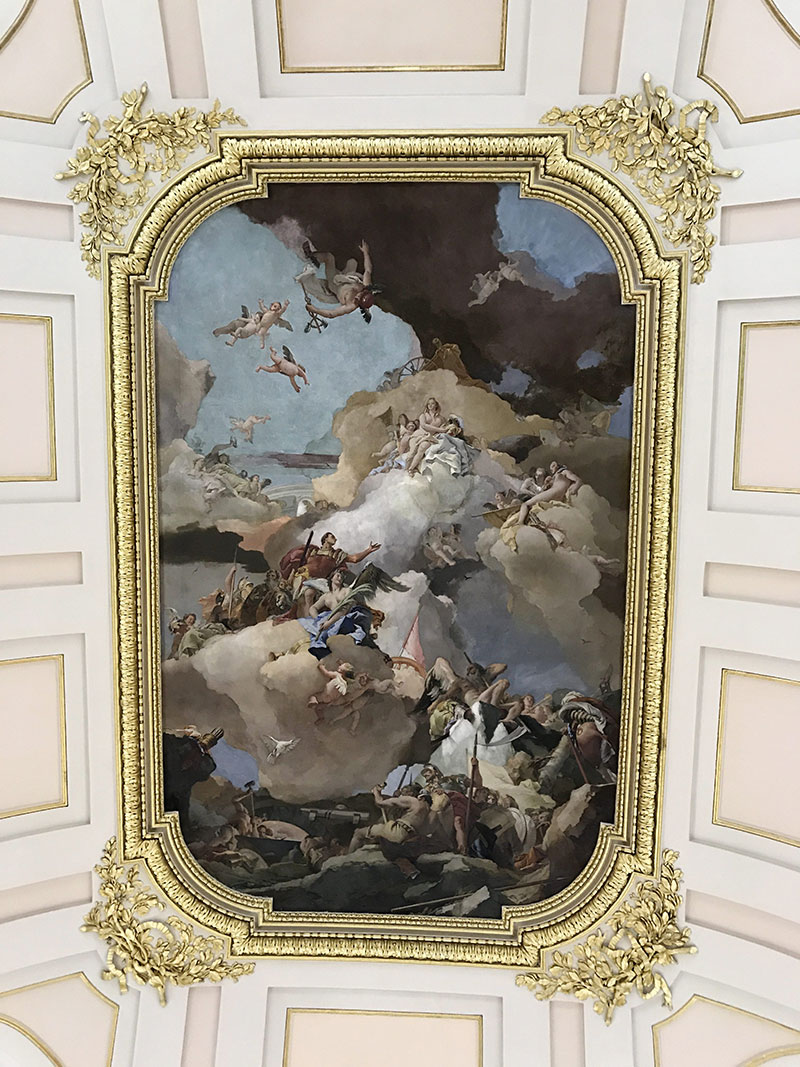
Located at the Hall of Halberdiers, the vault fresco, depicting Aeneas as envisioned by Virgil, was painted by the renowned Italian painter Tiepolo.
And there were many. From the neo-classical arches of Puerta de Alcalá located at Plaza de la Independencia to the Cybele Fountain in Plaza di Cibeles to the gates of Parque del Buen Retiro, which I would have the good fortune to roam later at the end of the day. The park teems with trees from the Americas, ponds, statues and the must-see Palacio de Cristal. Built in 1887, the palace was designed to showcase botanical treasures from the Philippines. This area, according to Pilar, was because of the vision of the forward-thinking King Charles III, who ruled Spain from 1759-1788.
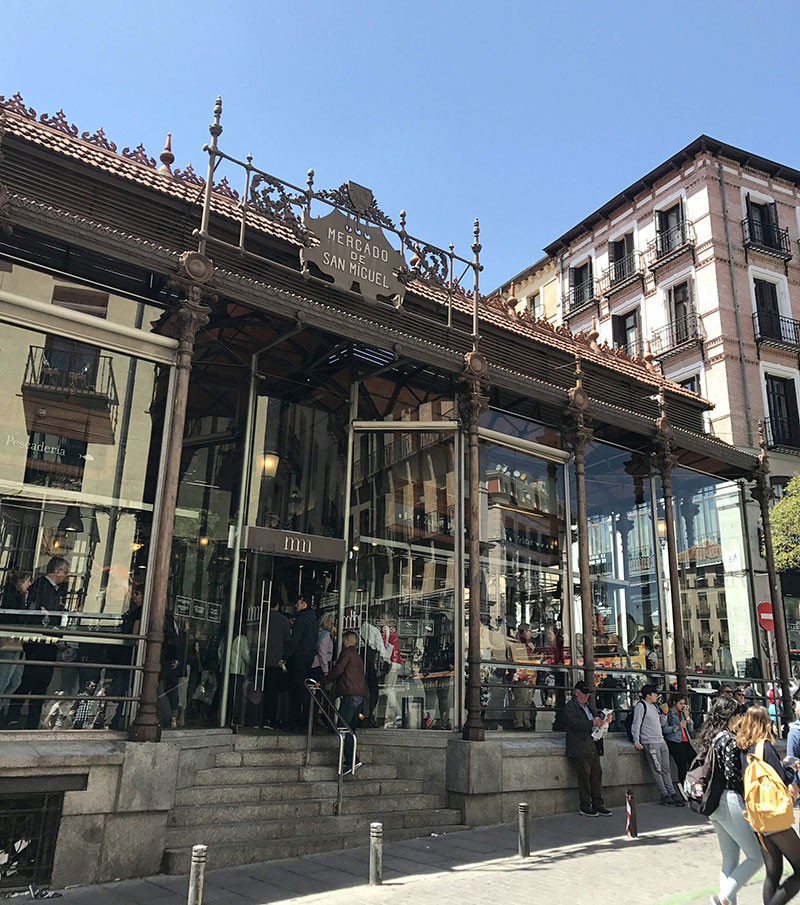
Famous among locals and tourists alike, the Mercado de San Miguel offers the gustatory delights of Spain.
We were expected to be at the Palacio Real de Madrid an hour earlier than the usual onslaught of tourists. Tracing its origin to the ninth century as a Muslim fortress, it has served as the official residence of the Spanish Royal Family since then though the present king, Felipe VI, has chosen the more modest Palace of Zarzuela, lying in the outskirts of the capital, as his and his family’s domicile. The palace now serves as a venue for state functions.

The author Carlo Daoana posing against one of the sculptures honoring the bullfighters at Plaza de Toros.
Passing through the main entrance of the palace, we were led to the courtyard where the guards were doing their drills. The austerity of the façade belied the baroque opulence of the interiors, with room after room in damask, rich wood paneling, and gold accents. From the landing of the main door, we entered the Hall of Halberdiers (named after Royal Guard sworn to protect the Royal Family), whose vault fresco, depicting Aeneas as envisioned by Virgil, was painted by Tiepolo. Beyond this room, photography was no longer permitted, so one had to commit to memory the clocks, the candelabra, the silverware, the tapestries and the collection of Stradivarius violins, said to be most extensive in the world. “Even the French people,” said Pilar, “recognize that the interior of Royal Palace of Madrid is more beautiful than their palace in Versailles.”

At night, the Puerta de Alcalá is a sight to behold.
From the palace, one can simply walk to the lanes offering a variety of dining and shopping options, all seemingly radiating from Plaza Mayor, which is punctuated by the equestrian sculpture of Felipe III. From the plaza, one can proceed to Puerta del Sol that marks Kilometer Zero of Spain’s motorways. The main feature of the vicinity, which is to say a tourist magnet for photo-ops, is the sculpture “El Oso y El Madroño” (The Bear and the Strawberry Tree). Another tourist artery is the Gran Via, parallel to Puerta del Sol. Running from the famed Metropolis building to Plaza España, it offers a slew of bars, shops, theaters — even a casino.
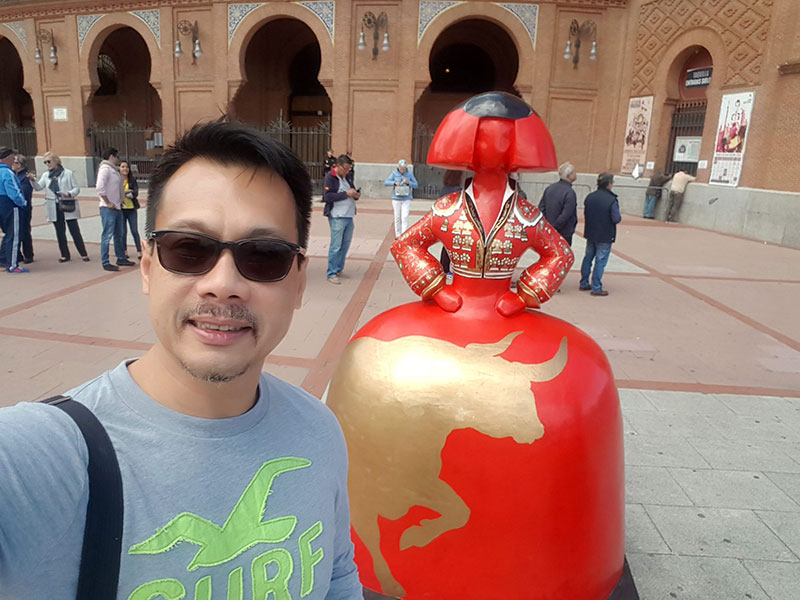
Pru Life UK’s SVP and chief marketing officer Allan Tumbaga posing with one of the “meninas,” inspired by the famous painting by Velasquez.
After culminating at Puerta del Sol, the group decided to go their respective ways, and I decided to spend the rest of the afternoon checking out Madrid’s fine art museums. The three major ones — Museo del Prado, Reina Sofia and Thyssen-Bornemisza — offer the three points in what is called the “Golden Triangle of Art.”

The Plaza Mayor is punctuated by the equestrian sculpture of Felipe III.
The Prado is an entire universe on its own and should not be missed. Some works encountered only in art books came alive before my eyes: the quizzical figures in the tableaux of the iconic “Las Meninas” by Diego Velasquez, the surreal, apocalyptic scenes from “The Garden of Earthly Delights” by Hieronymus Bosch, the horrifying “Saturn Devouring His Son” by Francisco Goya, and the piercing gaze of the lone figure of “The Nobleman with His Hand on His Chest” by El Greco.
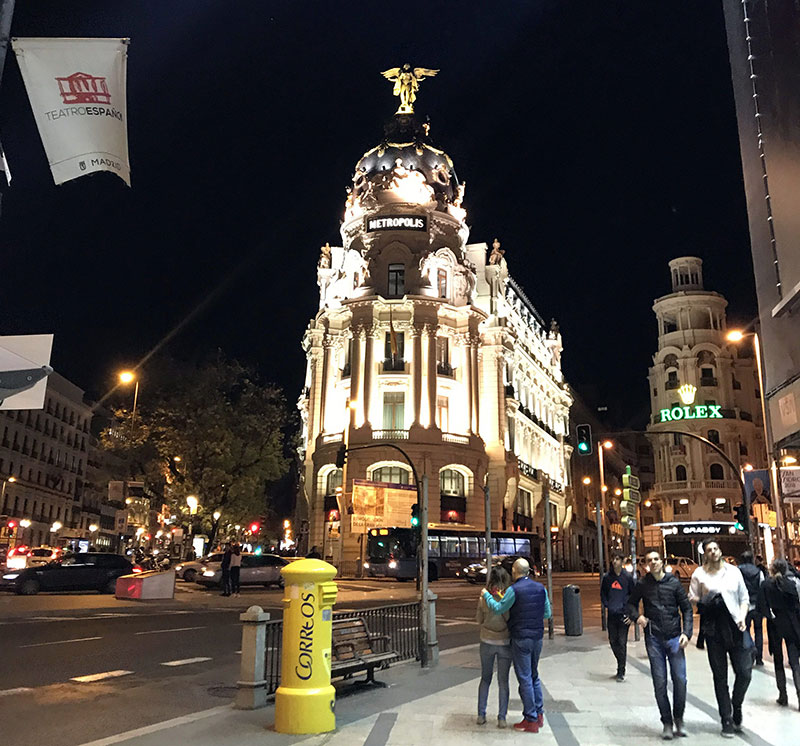
One of the famous buildings in Madrid, Metropolis, opens the Gran Via, a major tourist artery.
At the Reina Sofia, the avant-garde takes center stage, led by one of the most famous paintings of the 20th century, Picasso’s “Guernica.” No reproduction could ever prepare me for the intensity of the work. In its expansive, monochromatic view of war, the painting is a magnetizing allegory on the horror men inflict on each other.
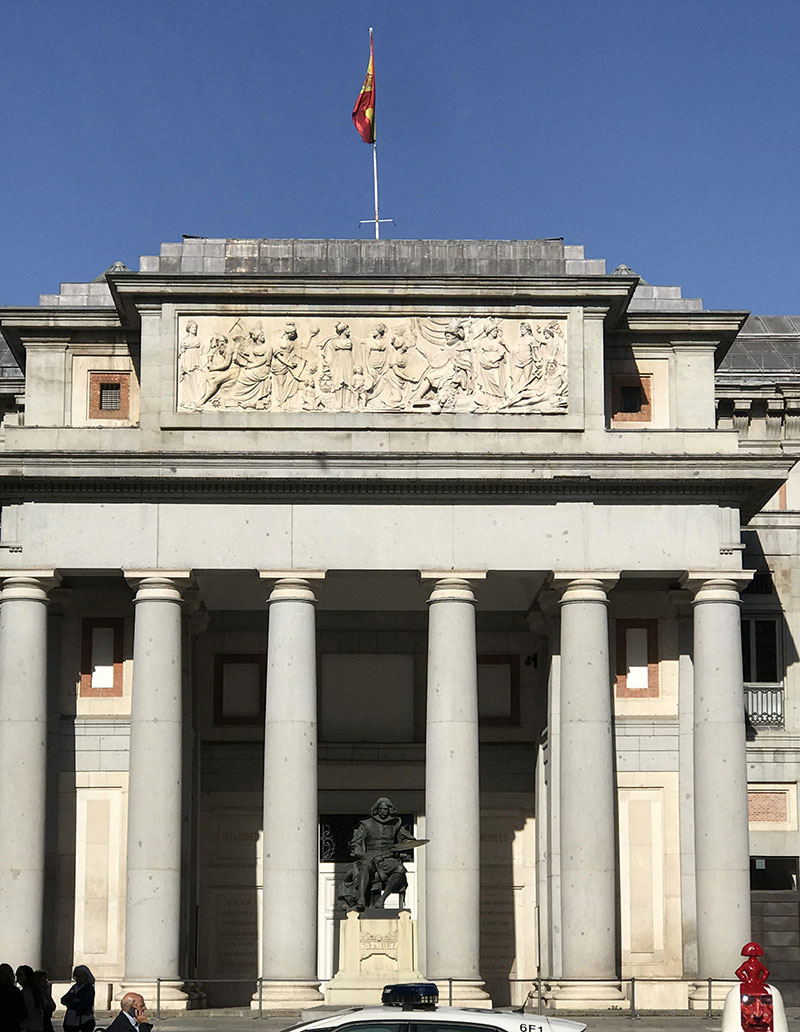
A private entrance to the Museo del Prado, which is adorned by the monument of Diego Velasquez.
One could ride a clear elevator at Reina Sofia opening to a top view of the capital. It was a different perspective, revealing the expected outline of a robust, confident city. But a totally different narrative of Madrid, it seemed, unfolded at street-level, from where raucous laughter and conversation erupted from the holes in the wall selling beer and tapas. Together with a friend I had not seen for 25 years, I would join this din when night fell — the human element in my own story of this unforgettable city.



















